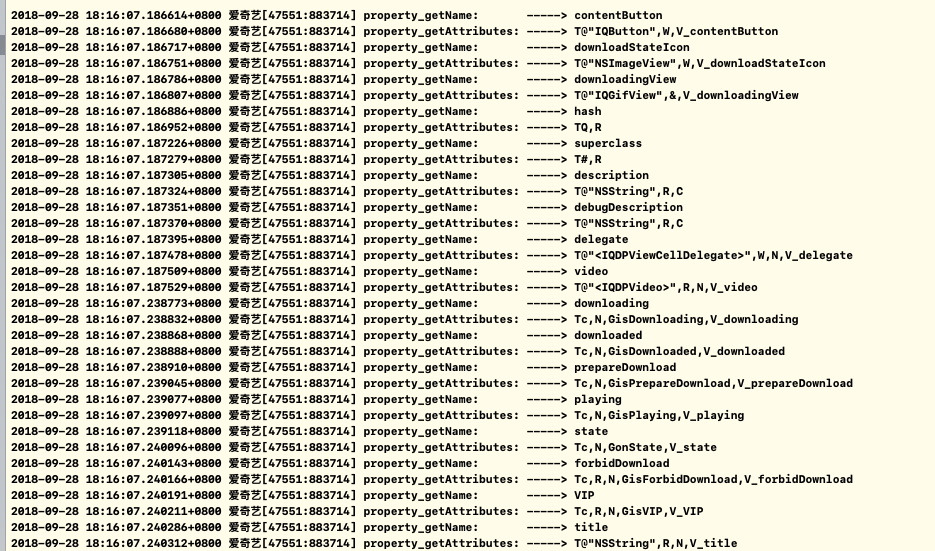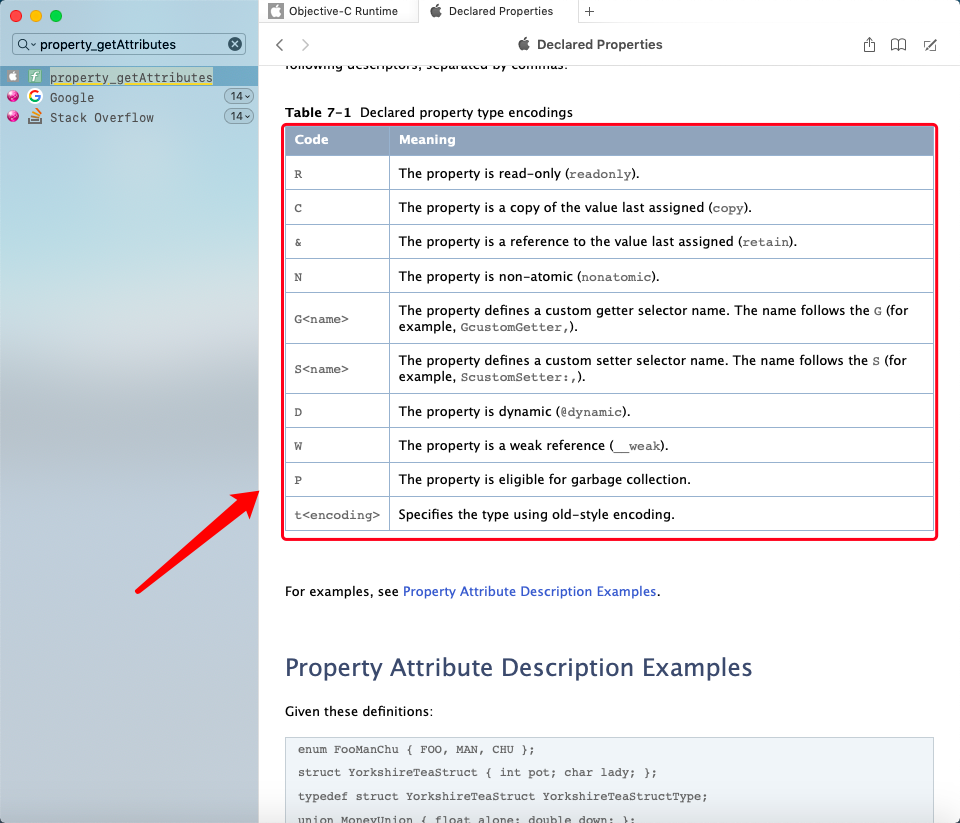前言
进来项目由于后台人员的离职缺失, 导致后台进度变慢, 接口也给的慢了, 界面早就写好了, 等接口的过程中, 研究了一下逆向开发, 刚刚接触, 好像发现了一个新世界的大门, 甚是欢喜, 也发现了自身知识储备的不足, 努力学习中! 下面讲不间断记录遇到的一些问题, 以及一些解决思路, 供大家参考, 如有错误欢迎指正!
正文
由于逆向iOS平台需要越狱设备等硬件因素, 而本人有缺少一台越狱手机, 于是瞄上了Mac端, 比较直观!
在 Hopper Disassember V4 中反编译能得到类文件和方法名, 通过类名, 方法名判断开发者意图; 得到类名, 第一反应就是通过类名获取到这个类的方法属性名称, 得到名称, 还想得到数据类型等信息, 就引入了下面的问题, Runtime为我们提供了方法, 可以得到类的属性名称, 代码如下:
1. 上代码:
1 | void kk_LogClassPropertyList(Class cls) { |
如上代码, 我们可以看到
class_copyPropertyList//属性列表
property_getName//获取属性名字
property_getAttributes//获取属性名称特性
打印结果如下图:
2. 看文档
如图, 可以很直观的看出来区别, property_getName只打印出了属性名字, 而property_getAttributes打印的信息更多一点, 你可能要问了, 那些T, TQ等等都是写什么意思, 我也带着疑问, 就来看了官方文档;打开Dash, 搜索property_getAttributes, 仔细查阅, 发现如下结果:

再接着看:

这个就一清二楚了, 很直观了, 例如Td(double类型), Tf(float类型)等, 根据你的需要查阅就好了!
3. 看源码
知道了 property_getAttributes 和 property_getName的用途, 又开始好奇他的实现, 于是上源码, 下载最新的objc4-723, 打开, 并且搜索property_getAttributes:
1 | const char *property_getName(objc_property_t prop) |
而name和attributes分别指向了property_t结构体:
1 | struct property_t { |
搜索发现name和attributes赋值分别为:
1 | property_t& prop = plist->get(plist->count++); |
copyPropertyAttributeString的实现为:
1 | const char * |
copyPropertyAttributeString第一个参数也是一个结构体指针, 如下:
1 | typedef struct { |
name赋值:
1 | static inline char * |
strdupIfMutable传入的参数为一个char型字符, 如果在内存中存在, 就返回, 如果不存在, 释放那块地址空间, 然后memcpy()函数从src内存中拷贝n个字节到dest内存区域,但是源和目的的内存区域不能重叠。
总结
小问题, 引出大思考, 底层还是要了解的, 否则只能抓瞎, 你觉得呢?

